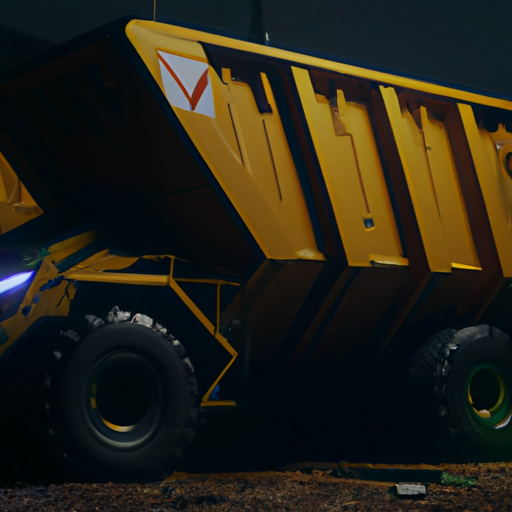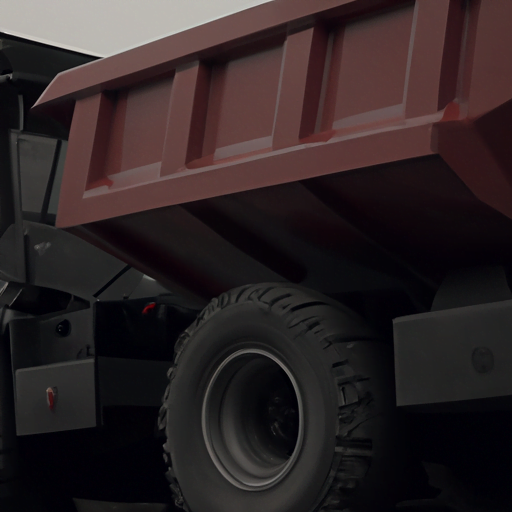-
Table of Contents
Introduction
Heavy Duty Dump Trailers play instrumental roles in disaster relief efforts. Their primary function is to facilitate the rapid and efficient removal of debris, wreckage and waste materials that are often generated during disasters such as earthquakes, hurricanes or man-made calamities. Due to their robust construction and vast carrying capacities, these trailers can handle large volumes of material at one go, thus expediting the cleanup process. These tools are crucial for paving the way for further relief activities including providing emergency supplies or setting up temporary shelters by clearing paths obstructed by rubble from damaged infrastructure – revealing how indispensable heavy duty dump trailers are in disaster management programs.
The Crucial Role of Heavy Duty Dump Trailers in Post-Disaster Cleanup
Disaster relief is a complex, multifaceted operation that requires resources of all kinds. It’s like putting together an intricate puzzle where every piece must fit perfectly to achieve the desired result. Among these pieces, one that plays a crucial but often overlooked role in post-disaster cleanup is the heavy-duty dump trailer.
Heavy duty dump trailers are robust and durable vehicles designed for hauling large volumes of materials about with ease. They’re normally seen at construction sites towing everything from crushed stone and sand to debris and waste materials. However, when disaster strikes – be it hurricanes, earthquakes or floods – their importance skyrockets as they become key players in clearing up areas affected by devastation.
When calamities hit communities, they leave behind immense amounts of debris – wrecked structures, destroyed possessions and even natural elements scattered around haphazardly like tree branches and soil washed out from landslides or riverbanks overflowed during floods. Removing this jumble quickly becomes the first vital task after ensuring human safety because returning life back on track depends heavily on how fast we can clear up these physical reminders of destruction.
And here’s where our heroes- heavy-duty dump trailers come into play! Their massive size combined with rugged strength allows them to handle loads much larger than other vehicles could carry while moving swiftly through ravaged grounds without risking damage; qualities that make them invaluable tools during such situations.
They help expedite the removal process by loading vast piles of rubble onto their expansive beds before transporting them away for proper disposal or recycling if possible thus not only aiding immediate recovery efforts but also contributing towards environmental sustainability thereafter.
In addition to logistical support provided during cleanup operations themselves though, there’s another reason why these industrial giants are indispensable in post-disaster scenarios: transportability of essential goods.
Often roads become blocked due to fallen objects obstructing passage making delivery difficult especially those bulky items necessary to rebuild lives again — think equipment required rebuilding homes along necessities like water food that must reach survivors quickly timely manner. But thanks to their superior maneuverability combined with an unsurpassed carrying capacity, heavy-duty trailers can overcome these obstacles effectively ensuring no person or community remains cut-off.
Moreover, they assist governmental agencies and non-profit sectors in implementing comprehensive disaster relief programs by transporting crucial supplies such as temporary shelters, medical kits and even power generators into areas where it’s needed the most thus acting as vehicles of hope quite literally!
In essence then, while we tend to associate disaster relief more typically with firefighting crews paramedics or institutions like FEMA Red Cross —all undoubtedly vital components recovery strategy— we shouldn’t overlook humble yet powerful contribution made by our friends – the heavy duty dump trailer drivers.
These unsung heroes behind wheels not only facilitate rapid cleanup operations greatly reducing trauma associated prolonged exposure devastation but also bridge gap between aid providers needy efficiently driving much-needed resources exact spots letting stakeholders focus what really matters: healing people restoring normalcy as fast possible.
So next time you see one those huge carriers on road remember salute men women operating them for without their tireless efforts many aftermaths would be far harder bear making us again realize importance having right tools job hand when need arises particularly something unexpected catastrophic a natural calamity occurs.
Maximizing Disaster Relief Efforts: The Use of Heavy Duty Dump Trailers
When disaster strikes, efficient response becomes crucial to limit the impact and restore normalcy as swiftly and safely as possible. Among the plethora of resources deployed during such times, there’s one workhorse that often goes unnoticed – heavy duty dump trailers. These robust vehicles play a significant role in maximizing disaster relief efforts by enabling efficient debris removal, transporting vital supplies, assisting in rescue operations, and even facilitating rebuilding processes.
Disaster situations like earthquakes or hurricanes typically leave piles of rubble in their wake—a combination of damaged infrastructure and natural debris—that need swift clearance to secure safe movement for rescuers and residents alike. This is where heavy-duty dump trailers come into play. With their large carrying capacities which can extend up to 22 cubic yards or more—equivalent to around ten pickup truck loads—they are capable of moving huge volumes at a time. The expedited cleanup process also helps prevent potential health hazards that might arise from stagnant waste pools.
Transporting crucial provisions is another key aspect handled by these powerful machines during crisis management phases. Disaster-stricken areas often face severe shortages of essential goods ranging from foodstuffs, medical supplies to construction materials for makeshift shelters—all requirements which heavy-duty dump trailers efficiently deliver on-site owing to their spacious setups.
Apart from helping with logistics related tasks, these industrial titans further assist search-and-rescue missions when needed most: following devastating events like landslides or building collapses where rapid excavation could mean the difference between life and death for trapped victims beneath tonnes of wreckage—an operation made feasible via the impressive dumping abilities these trucks possess.
Once immediate threats have been attended to and basic amenities restored—it’s now time for recovery efforts wherein destroyed infrastructures need replacing along with restoring ecological balance disrupted by either removed trees or accumulated sediment brought on by flooding incidents; both challenges best addressed using our dependable companions—the heavy-duty dump trailers loaded with new construction materials or landscaping fill—capable of putting things back together again step-by-step.
But the immense utility of these trailers is not isolated to disaster scenarios. They can also be repurposed for a range of constructive applications during peace-time such as agriculture, mining, construction and more—showcasing their versatile function and viability in broader contexts beyond just emergency situations.
In conclusion, heavy duty dump trailers significantly maximize disaster relief efforts by functioning as mobile waste management systems, efficient supply carriers or even life-saving excavation tools whenever required; while also assisting rebuilding processes post crisis reduction, proving themselves invaluable assets when it comes to managing catastrophes effectively.
Whether directly battling against consequences brought on by calamitous events or aiding indirect recovery measures—this unsung hero of the disaster response fleet serves instrumental roles that help communities bounce back from various crises faster than ever before—an overwhelming testament to its strategic importance within this critical framework. Next time you see one out there on the roads or at work sites – take a moment to appreciate the essential services they render that keep us going come what may.
Understanding the Importance of Heavy-Duty Dump Trailers During Disasters
The role of heavy-duty dump trailers in disaster relief is often overlooked but it’s paramount in restoring normalcy after a calamity. These industrious workhorses provide immeasurable help during the challenging process of cleaning up and rebuilding communities that have been affected by natural disasters such as floods, hurricanes or earthquakes.
When we think about disaster relief operations, our minds tend to focus on immediate rescue efforts- pulling people from rubble or evacuating them from flood zones. And while these actions are critical, post-disaster clean-up is an essential phase that can significantly affect recovery speed too.
This is where heavy-duty dump trailers come into play. The ability of these machines to haul monumental amounts of debris makes them indispensable following large-scale catastrophes. They mop up all sorts of waste including broken concrete blocks from crumbled buildings, toppled trees and any other forms of wreckage left behind by nature’s fury.
But their role stretches beyond just hauling trash away. In actual sense, they serve as crucial lifelines connecting resources with those who need them most during these trying times. Take for instance a situation where roads have become impassable due to piles upon piles of debris; Dump trailers possess the capability and capacity needed to clear pathways enabling emergency services like medical teams and food supplies reach individuals located in areas hardest hit by the disaster.
In addition, one may argue that despite their size – which could potentially be viewed as a hindrance when navigating through narrow streets – these vehicles’ sturdy build protects both driver and cargo even when operating under extreme conditions common after disasters.
Also noteworthy is how heavy-duty dump trailers contribute towards longer-term reconstruction efforts post-disaster primarily through transport duties such as carrying construction materials necessary for rebuilding infrastructure like homes, bridges or schools destroyed during the incident.
At this juncture it’s important not only appreciate contributions made by human volunteers working tirelessly in providing relief after disasters strike but also equipment they rely on get job done safely and efficiently. Without the help of heavy-duty dump trailers, responders would face an even greater challenge in managing aftermaths of natural disasters.
In conclusion, it’s easy to picture a landscape filled with huge piles of debris following a disaster and feel overwhelmed about clearing such immense amounts of wreckage. Yet thanks to heavy duty dump trailers, this daunting task becomes manageable making these vehicles unsung heroes in times catastrophic crises.
Just as emergency teams are on standby ready for action when disasters strike so too should be fleets of well-maintained heavy-duty dump trailers waiting to swing into gear at short notice.Rather than viewing them as mere hauling machines it’s high time we appreciated their role in restoring hope by cleaning up after nature’s wrath has unleashed devastation.
As society continues grappling with escalating threats posed by climate change-induced extreme weather events, investing more towards bolstering our heavy duty dump trailer capacity should be considered as integral part ensuring resilience during both initial rescue efforts recovery phases that follow after devastating catastrophes occur.
So next time you see one rumbling down the road or hear its characteristic engine roar just remember; there goes another hero quietly going about its business but always ready step up if disaster strikes again.
Q&A
1. Question: What is the role of heavy-duty dump trailers in disaster relief?
Answer: Heavy duty dump trailers play a crucial role in disaster relief by facilitating the quick and efficient removal of debris, rubble or waste material post-disaster. This paves the way for other relief activities like rebuilding infrastructure or providing essential services.
2. Question: How does the capacity of heavy-duty dump trailers impact disaster relief efforts?
Answer: The larger capacity of heavy-duty dump trailers allows them more volume per trip which enables faster clean-up operations following disasters. This accelerates recovery processes because it clears paths for emergency vehicles, and helps restore normalcy quicker to affected regions.
3. Question: Can heavy-duty dump trailers assist in delivering supplies during disaster relief?
Answer: Yes, aside from removing debris after a disaster, these versatile vehicles can also be used to transport large quantities of necessary supplies such as food, water, clothing or building materials needed for both immediate survival needs and long-term rebuilding activities.
Conclusion
Heavy duty dump trailers play a pivotal role in disaster relief efforts. They facilitate the prompt clearance of debris, transportation of supplies and reconstruction materials, contributing significantly to immediate rescue operations and long-term recovery processes. Their robust design allows for operation under challenging conditions and terrains often present in disaster-stricken areas, reinforcing their importance in such scenarios. Hence, heavy duty dump trailers are indispensable tools that enhance efficiency and effectiveness during disaster relief missions.


